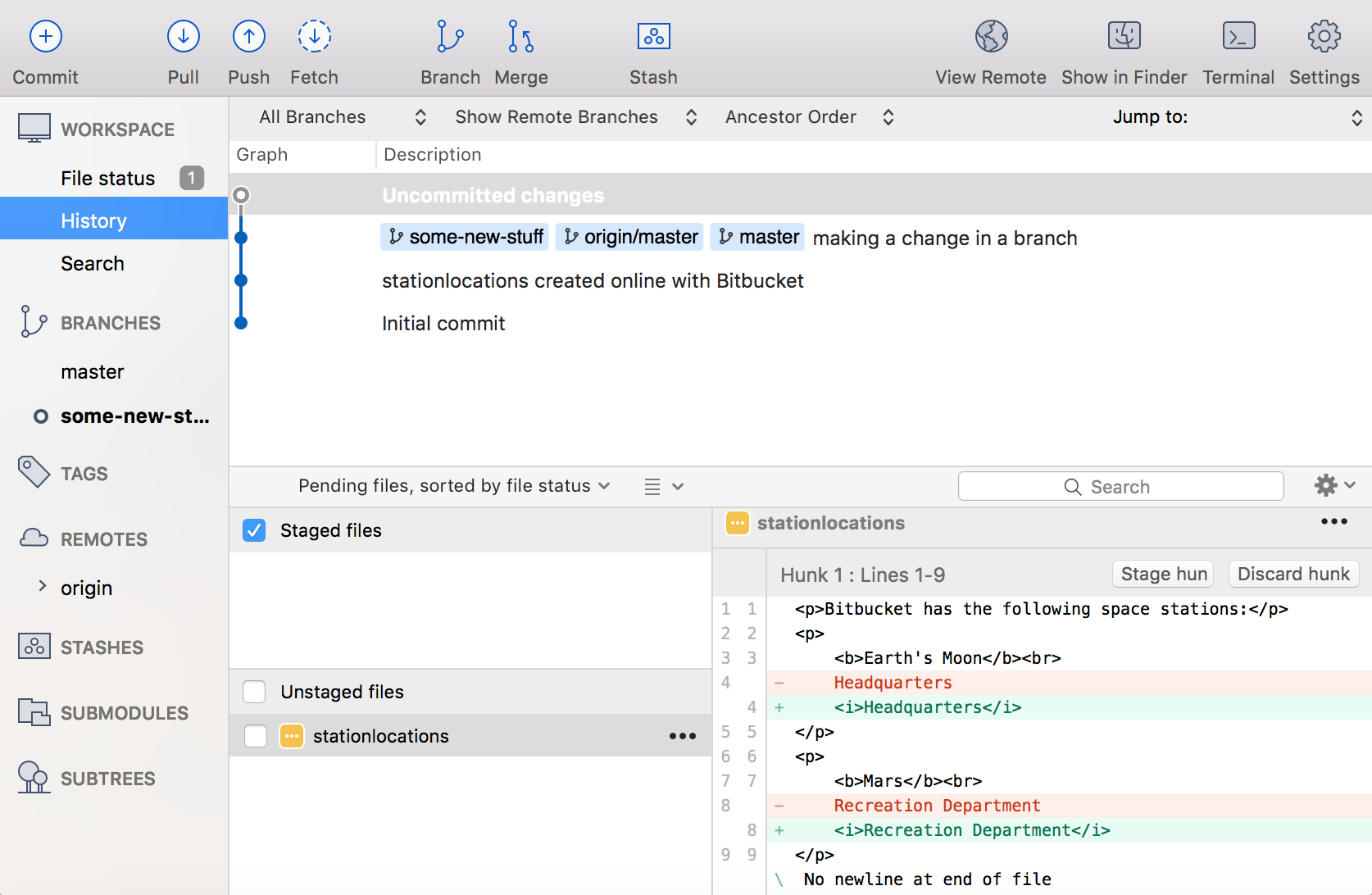

The image below reports what we've done in Demo: Your last commit was Delete file.txt and there were three commits before that.
#Git create new branch install#
(See documentation for your operating system for the install instructions.) If the computer complains bash: gitk: command not found…, then install gitk. If you want to see a visual representation of branches, run the command gitk. This is because there is neither a new file nor any modification in existing files. Enter the third line, git status, to verify you are on the new branch you just created.Īs you can see below, git status reports you are on branch myBranch and there is nothing to commit. The next command, git checkout -b myBranch, -b tells Git to create a new branch and name it myBranch, and checkout switches us to the newly created branch. All commits are identical on both the copies as well. There is no difference between the two copies. The first command, git status reports you are currently on branch master, and (as you can see in the terminal screenshot below) it is up to date with origin/master, which means all the files you have on your local copy of the branch master are also present on GitHub. If you haven't yet done so, follow the instructions in that article to clone the repo from GitHub and navigate to Demo. Let's go back to the previous article in this series and see what branching in our Demo directory looks like.

In real-life projects, there are multiple owners with the rights to merge code in a repo.)
#Git create new branch full#
(This assumes you are the only owner of the repo and want full control of what code is added to it. Using branches allows you to verify contributions and select which to add to the project. Everyone has different knowledge and experience (in the programming language and/or the project) some people may write faulty/buggy code or simply the kind of code/feature you may not want in your project. If everyone starts programming on top of your repo's master branch, it will cause a lot of confusion. Another, probably more important, reason is Git was made for collaboration.It's better to start with a prototype, which you would want to design roughly in a different branch and see how it works, before you decide whether to add the feature to the repo's master for others to use. This would be very bad for active users of your project. If you are creating a new feature for your project, there's a reasonable chance that adding it could break your working code.The main reasons for having branches are: eBook: An introduction to programming with Bash.Try for free: Red Hat Learning Subscription.


 0 kommentar(er)
0 kommentar(er)
